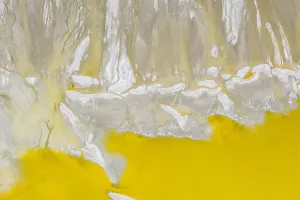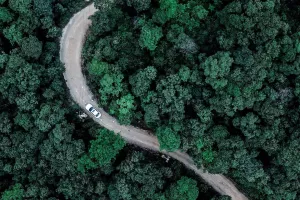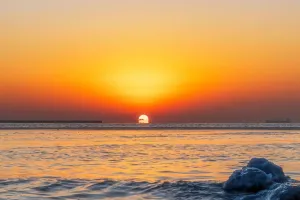We all know that clouds are composed of many small water droplets and small ice crystals. So, how does snow form?
When the temperature is low and the climate is moist, it is easy to produce snowfall. Because the ground temperature is generally below zero at this time, the temperature in the high-altitude cloud layer is lower.
At this time, the water vapor originally in the cloud will directly condense into small ice crystals and small snowflakes in a low-temperature environment.
When the power of the air is not enough to hold them, this condensation will fall from the clouds to the ground, and under the influence of the wind, they collide with each other in the air and finally form a snowflake.
Although the surface of a crystal is transparent because the reflection is weak, the reflection of multiple crystals will make the snowflakes almost a "mirror".
In this way, each side of the snowflakes reflects some light back, and these messy planes reflect all light. So the snowflakes we saw became white.
Many people feel that the whole world seems to be quiet when it is snowing.
You may think this is related to human factors. Because people do not go out often when they are snowing, they stay indoors and have nothing to do with outside. However, this kind of quiet is also scientific reasons.
"In fact, snow will absorb some sound waves," said the meteorologist Plucky. Plucky said that when snowflakes accumulated, there would be a lot of gaps.
When the sound encounters a loose and long structure such as snow, it will reflect in the gap multiple times to cause the energy loss of the sound waves and cannot continue to spread.
Of course, in addition to this physical phenomenon, other factors have also played a certain role.
For example, there are fewer people who stay outdoors in winter; during the snowfall or after, traffic has decreased; and other animals (such as birds) do not often go out.
Because snowfall makes their living environment colder, it also makes them more difficult to find food.
Although continuous snowfall can greatly reduce the volume of the entire world, Plucky pointed out that if blizzard weather is encountered, such as the snowstorms in the northeast of the United States, the world still cannot be quiet.
When snowing, we looked at the ground from the sky, and the earth was like a crystal clear magic ball, which was beautiful. But do you know that in the vast universe, it is not just the earth, but other planets will snow!
Mars, a red planet that looks like a fiery appearance, also has the mystery of snowfall. According to scientists, the magical Mars will snow in winter and summer.
In winter, the area of snow is mainly concentrated in the middle latitude between the Martian equator and the polar. In summer, there will be snow only in the polar.
Not only will Snow on the surface of Mars, but also snow on Neptune. With the duplicate cycle of Neptune surrounding the sun, nitrogen and methane on the surface will repeat and freeze.
When these liquid substances that are sprayed into high altitude are condensed, it falls, and pink snow is formed!


